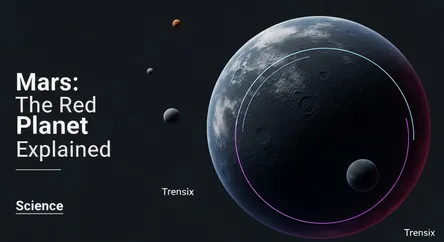Science
Mars: The Red Planet Explained

Discover Mars, the fourth planet from the Sun. Learn why this dusty, cold world is a major focus for space exploration and the search for alien life.
What is it?
Mars, often called the 'Red Planet,' is the fourth planet from the Sun and Earth's closest planetary neighbor. Its distinctive reddish hue comes from iron oxide (rust) on its surface. Mars is a terrestrial planet with a thin atmosphere, polar ice caps, canyons, and extinct volcanoes, including Olympus Mons, the largest in the solar system. While its environment is harsh and cold, evidence suggests it once had liquid water, making it a prime candidate in the search for past extraterrestrial life. It has two small moons, Phobos and Deimos.
Why is it trending?
Mars is a constant source of news due to ongoing and ambitious space missions. NASA's Perseverance rover and Ingenuity helicopter are actively exploring the Jezero Crater, seeking signs of ancient microbial life and collecting samples for a future return to Earth. Furthermore, companies like SpaceX, led by Elon Musk, have bold plans to establish a human colony on Mars, making interplanetary travel a tangible and exciting future prospect. These endeavors keep the Red Planet at the forefront of scientific discovery and public imagination.
How does it affect people?
The quest to explore Mars drives significant technological advancement. It pushes the boundaries of robotics, autonomous systems, life support technology, and spacecraft engineering, with innovations that often find applications back on Earth. For the public, Mars exploration serves as a powerful source of inspiration, encouraging interest in science, technology, engineering, and math (STEM) fields. It also raises profound questions about humanity's future, our potential as a multi-planetary species, and our place in the universe.